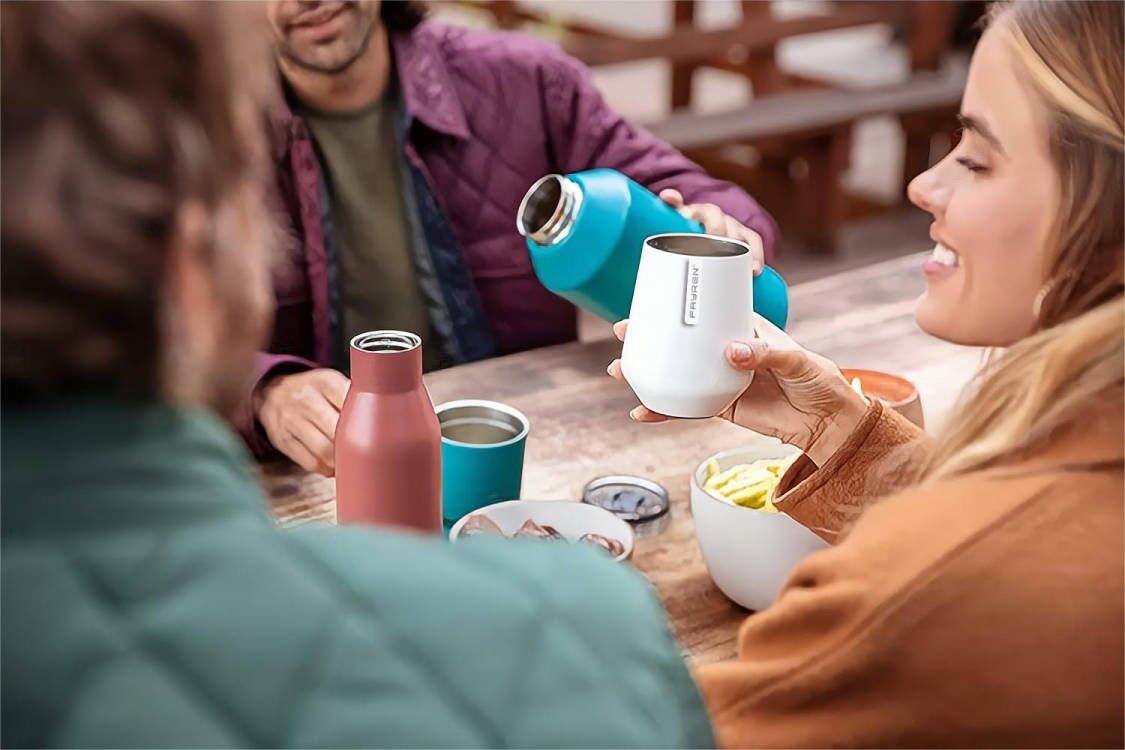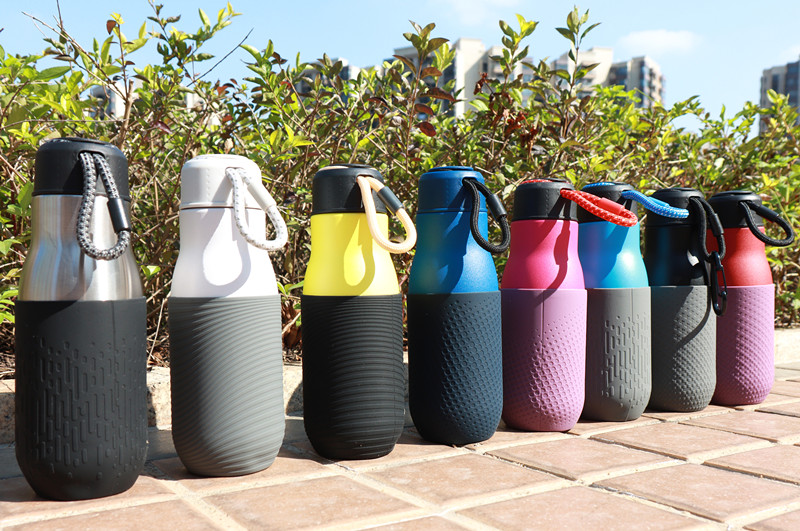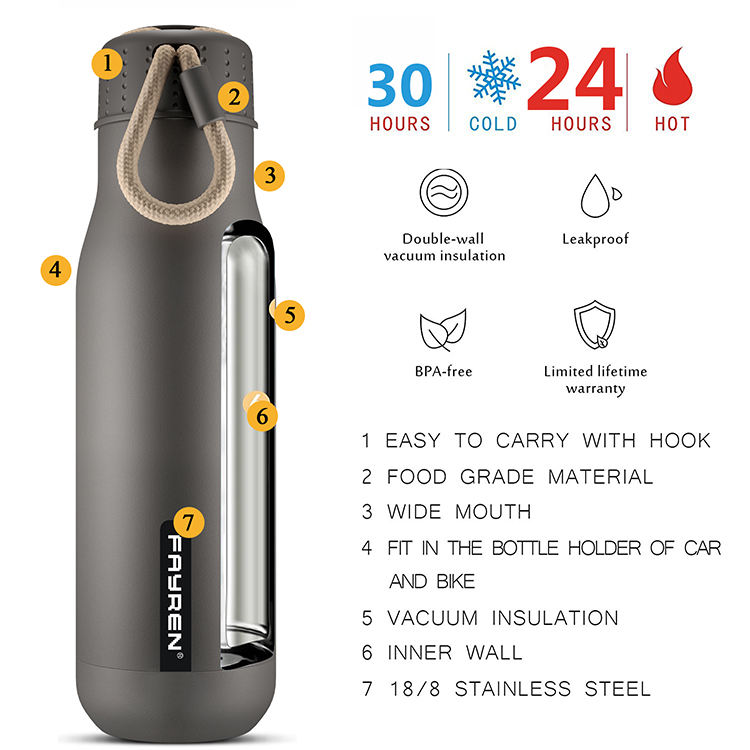
How does Stainless Steel Insuated Bottle keep Temperature?
2023-12-02 16:25
Had you ever wondered how that stainless steel bottle manages to keep your drinks hot or cold for hours on earth? Let's delve into the intricacies of production and explore the principles that transform a simple container into a thermal powerhouse.
1. How is Stainless Steel Produced to Enhance Thermal Properties?
Stainless steel insulated bottles are crafted from a special blend of alloys, primarily iron, chromium, nickel, and manganese. The manufacturing process involves precise control of these materials, resulting in a corrosion-resistant and durable product. The inherent properties of stainless steel lay the foundation for its impressive thermal conductivity.
Fayren adopts 304 stainless steel 100% food-grade for stainless steel insulated bottle, rigorous inspection to ensure the quality in each progress and bulk production.
2. What Role Does Double-Wall Insulation Play in Temperature Regulation?
The secret lies in the double-wall construction of these bottles. The space between the inner and outer layers is typically a vacuum. This design minimizes heat transfer, acting as a barrier that prevents the external temperature from affecting the contents inside. Vacuum insulation is one of the most widely used thermal insulation materials for stainless steel thermos bottle.
Vacuum insulation materials generally consist of a vacuum layer between two layers of stainless steel. This structure can maintain the temperature of the liquid in the stainless steel thermos bottles for a long time. The biggest advantage of vacuum insulation is that the heat preservation effect is good, and it will not affect the volume and weight of the bottle.
3. Why Does Stainless Steel Outperform Other Materials in Thermal Insulation?
Stainless steel boasts superior thermal conductivity compared to materials like plastic or glass. This means that it can efficiently transfer heat away from the contents, keeping beverages colder or hotter for more extended periods. Additionally, its robustness ensures the longevity of these thermal properties, outshining alternatives.

4. How Does the Surface Finish Impact Thermal Performance?
The finish of the stainless steel vacuum insulated bottle surface contributes to its thermal capabilities. Polished surfaces minimize heat absorption from the environment, helping to maintain the desired temperature inside. Manufacturers often employ specialized finishes to optimize thermal resistance, making the bottle even more effective in insulation.
5. Is there a Difference Between Hot and Cold Insulation?
Interestingly, the answer is yes. The principles of insulation work for both hot and cold beverages, but certain design elements might cater to one more than the other. Bottles with additional features like a wide mouth for ice cubes or specialized thermal layers may excel in keeping drinks colder, while others prioritize heat retention for hot beverages.
6. How Does the Lid or Cap Contribute to Temperature Regulation?
The thermal performance of stainless steel vacuum insulated bottles extends to their lids or caps. Many bottles come equipped with insulated lids, often featuring a rubber or silicone seal. This not only prevents heat exchange through the opening but also ensures a secure seal, preserving the internal temperature.
7.Can the Design of the vacuum insulated bottle Impact Insulation?
Yes, indeed! The design features, such as the shape and size of the bottle, can influence its insulation properties. Compact designs reduce the internal air space, minimizing heat exchange with the external environment. Ergonomic shapes also enhance the overall insulation performance, making the bottle more efficient in retaining temperature.

Get the latest price? We'll respond as soon as possible(within 12 hours)













